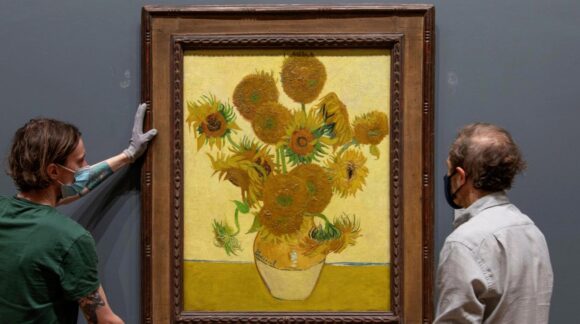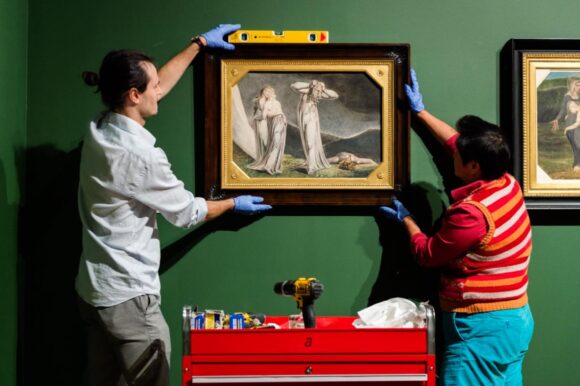
A few months ago I was clicking aimlessly through Tate Britain’s online paperwork when I saw a job advert that plunged a dagger into my heart. “Project Manager, Tate Britain Rehang,” blared the ad. Salary £30,000. “Oh no,” my inner art lover screamed. “A willy is about to be waggled.” Again.
The gallery rehang is the biggest weapon in a museum director’s armoury. It involves changing not only the look of all the rooms, but also the location and role of every work in the collection. When you rehang a gallery you change its character and redirect its meaning. It’s toe-to-toupee plastic surgery. A museum goes into a rehang as one thing and emerges as another.
Not surprisingly, therefore, new museum directors love to do it, especially if they’re male. The rehang is a way of publicly signalling your alpha powers and flexing your macho muscle. “No,” you are saying to your predecessors, “you got it wrong. I am getting it right.” With rehangs, directors have the opportunity to leave their own micturition stain on the museum walk of fame.
We, on the other hand, the poor punters who love our museums as they are and like to return to them, who go there to meet old friends and gently imbibe a cultural experience, are confronted by closed doors, diversion signs, new routes, new chaos. Nothing in a museum flattens the joy of visiting it quite as successfully as an ambitious rehang. For weeks, months, years, you cannot see what you want to see.
Right now in London three of our biggest museums are in the throes of a revamp. Just as you can’t get from A to B on the roads because of the endless roadworks, so in art you can’t stroll enjoyably through a museum because of the endless repositionings. Indeed, at the National Portrait Gallery you can’t get in at all because it has been closed for three years for the only museum experience that trumps the full rehang: the full rebuild.
During the Covid crisis, when the nation yearned so much for the balm of art, when we were all so transparently in need of cultural rousing, the only museum in the land tasked specifically with putting a face to the national character — the National Portrait Gallery — was closed. Why? Was the roof falling down? Were there holes in the floor? No. Its director, Nicholas Cullinan, had merely been handed £35 million to build a plush new entrance and primp the collection. Up went the scaffolding. Down went the national mood.
Next door, at the National Gallery itself, the director, Gabriele Finaldi, has been more Churchillian. Last to close, first to open, his gallery had a heroic Covid. It was there for us. Indeed, ever since he took over in 2015, Finaldi has proved himself to be inventive, brave, inclusive. Everything you want from a museum director. Unfortunately he’s also a bloke who cannot resist a waggle.
If you pop into the National Gallery today you will encounter paper signs and visitor tape, closed galleries and temporary routes, all the unwanted diversions that signal a big rehang. With its bicentenary around the corner, the National has embarked on major surgery.
The last time I visited, the Sainsbury Wing was closed and the collection had been crammed into a madcap circuit that looked as if had been planned with the toss of a coin. Eras, nations, subjects had been thrown into the air and left to land wherever there was space. As a museum the National had ceased temporarily to make any sense.
Worse still, the rumours seeping out about the bicentenary rehang were enough to give any sentient art lover the chills. A display that had always been coherently chronological was going to become thematic, said the whispers. Seurat was going to be hung next to Piero della Francesca. Van Gogh’s Sunflowers was going to join the old masters. The National will be playing snap across the ages. Until now they’re just rumours. We’ll see.

But, to return to the beginning, where are we with Tate Britain and its redo? Ever since the gallery split in two, in 2000, with one half becoming the glamorous Tate Modern and the other half turning into the benighted Tate Britain, the former has had an easy ride while the latter has struggled. None of its directors have seemed to me to be actively in love with British art. All of them have given the impression they would rather be directing somewhere more snazzy and contemporary.
This has felt especially true of the present Tate Britain director, Alex Farquharson, who also took charge in the all-change annus of 2015 and who, too, has had three years of his impact blocked by Covid. So far he has been able to express himself only with feisty temporary exhibitions such as Queer British Artor the Hogarth show of last year; the one with the unhelpful captions that told you nothing about the art while focusing furiously on Britain‘s colonial past.
Farquharson’s determination to be preachy at every opportunity has also capsized the Turner prize, which no one cares about any more because its impact has been dulled by poor choices and off-putting agendas.
Dark rumours have been circulating about his disastrous Tate Britain rehang, with crazy captions, missing pictures and determinedly wokeish inflections. I went along this week prepared fully for catastrophe. That is not what I encountered. What I encountered was a triumph.
It’s not yet complete — that poor project manager who got the £30,000 job still has half the gallery to go, with full disclosure planned for May — but what has been achieved already is exciting, uplifting, involving and deep. And it succeeds on many fronts.
The Tate’s enormous collection of forgotten art has been sieved through in detail and hundreds of pictures, hidden for decades, such as Luke Fildes The Doctorare finally seeing the light. The result is a gallery full of new sights and a tangible sense of freshness.
The rooms have been repainted in darker colours, so the spaces feel less white and haughty, more friendly and domestic. Female artists, most of whom I have not previously encountered, are involved densely in the fresh hang. Who knew there were this many forgotten women like Annie Swynnerton rotting away in the Tate’s basement?
A new set of captions, with an emphasis on detailed storytelling, are genuinely helpful in understanding what you are looking at. Especially with the large number of Victorian genre pictures that are now busily involved in the gallery’s journey. When I went it was obvious that a larger-than-expected audience was enjoying finding out all this new stuff about all this new art. It’s been decades since I saw Tate Britain looking as pleasurable as this.
The room that has caused the most controversy so far, a room filled with 18th-century art that keeps banging on about the issue of slavery and the part played by it in Britain’s social history, turns out to be both fascinating and poignant. Discovering that the elegant sitters in this or that portrait by Zoffany or Gainsborough owed this or that to the evil of slavery brings drama and insight to our confrontations with them. Finding out that these posh sitters had such dark pasts doesn’t diminish their portrayals: it enlarges them and intensifies the contact.
Not only has Farquharson’s rehang given Tate Britain an identity that is clear — this is the nation’s history, these are the circumstances that produced its art — but it has also validated his exhibition policy by framing his ambitions for it. What seemed intrusive in the temporary shows seems apposite when backed up by a full gallery rethink that puts things in a proper context.
There’s still a lot to go. But it’s already well worth seeing. Entirely unexpectedly, the moral of this story is: sometimes a willy-waggle can be a good thing.
